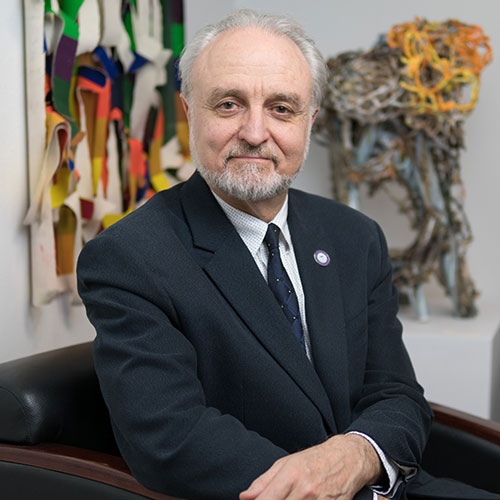Gerar Edizel, professor of Art History delivers lecture on Cultural Appropriation in Art

Gerar Edizel, Professor of Art History in the Alfred University School of Art and Design, delivered an invited lecture, "Cultural Appropriation in Art," to Clay Cohorts, a hybrid online and in-person teaching and support organization for artists.
Edizel presented a two-and-a-half hour lecture and discussion titled "Cultural Appropriation in Art" to help clarify aspects of the issue of appropriation to professional artists. Well publicized controversies and the related traffic on social media generated both concern and confusion over the issue. The concerns of artists, who consider the freedom of expression a value essential to their work, are understandable.
Edizel's presentation helped define cultural appropriation--its types, range, value and pitfalls--hoping that the clarifications will help the sense of freedom with which artists practice their art and better know how to approach intercultural matters of grave sensitivity susceptible to cause harm.
Edizel, from the Clay Cohorts website: “The topic of cultural appropriation is very complex and vexing. The topic of cultural appropriation in art is even more so, since artists are expected to access the widest spectrum of cultural material and freely use it to make art. The issue must not be confused with the entirely different category of plagiarism and copyright infringement that involves the rights of individual authorship. The ownership of culture is diffuse and difficult to delineate. Cultures are not monolithic and engage in exchanges as they interact. The history of art is replete with enriching innovations that resulted from what can be considered cultural appropriations. In our times, however, the dominant and globalizing reach of capitalism has exacerbated power differentials and, as a result, heightened sensitivities toward protecting identity-defining cultural symbols and artifacts from exploitation through commodification. I believe that at the foundation of this protectionism lies the belief that certain things are sacred and should not be subject to spirit-destroying misuse and degradation. The question would be whether there are limits to what comes under the purview of the notion of artistic freedom that artists hail as sacred as well."
